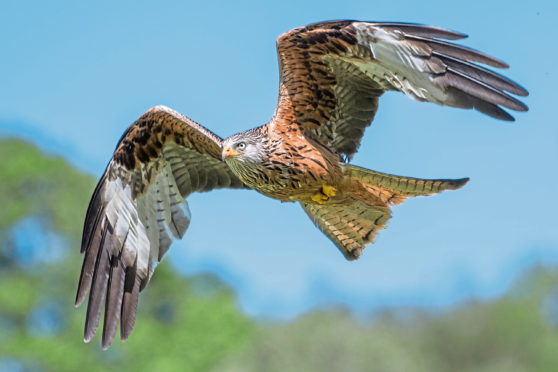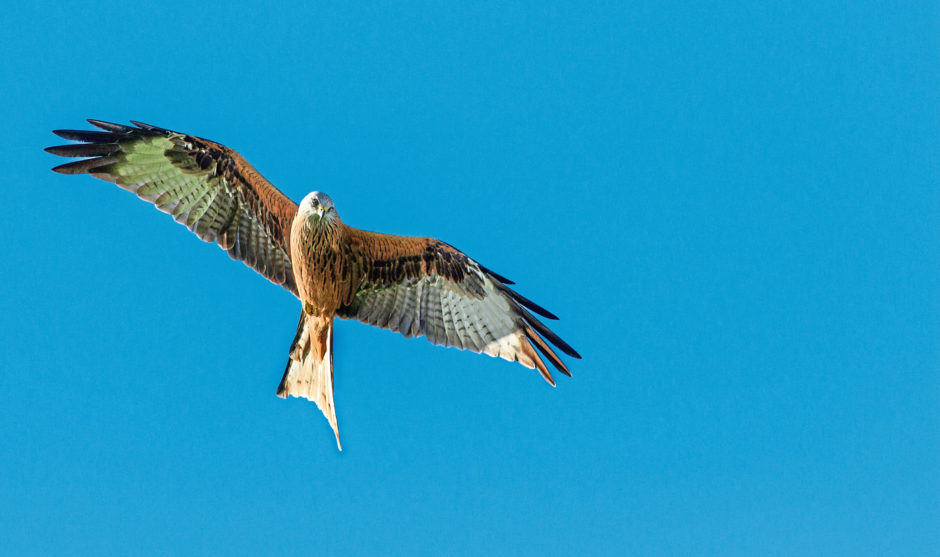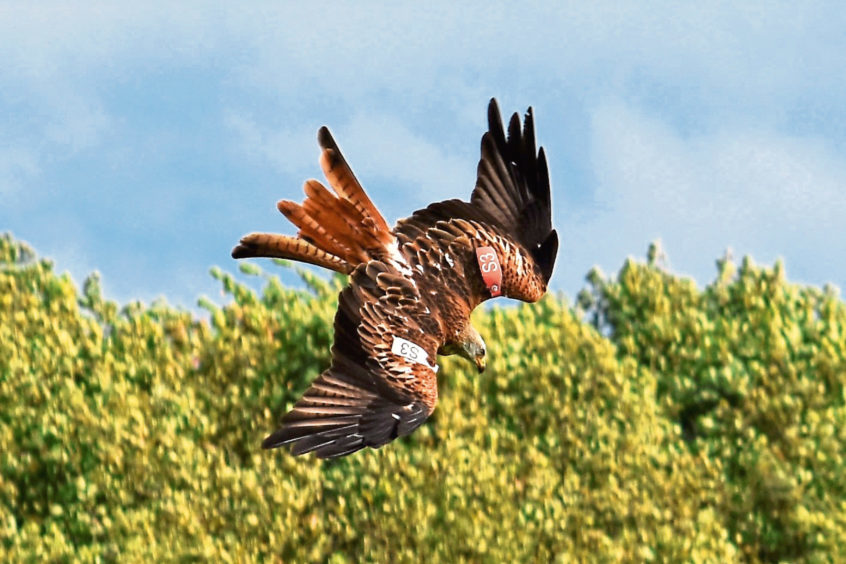The buzzard sitting in the grassy field ducked its head, then ducked again, as a procession of red kites swooped down upon it, one after another as if in concerted attack.
But this wasn’t some brutal avian assault, for these kites weren’t interested in conflict; instead their main focus was on the scraps of offal scattered around the buzzard, and with each low pass a kite grasped a meaty morsel in its yellow talons before spiralling upwards again.
I was in the viewing hide at the Argaty Red Kite centre near Doune and what a marvellous experience it was, with over 20 kites swirling in the air at the same time as they came to feed upon bait laid by head ranger, Tom Bowser.
Tom is quick to point out that only a very small amount of food is put out for the kites each day, as they are wild birds that catch their prey naturally and it is important that there is no reliance on artificial feeding.
As I watched the aerial acrobatics of these magnificent fork-tailed raptors, I couldn’t help but think that this was wildlife tourism at its very best and a remarkable example of a working farm benefiting from the nature around it. It is also part of the astonishing story of the resurgence of the red kite in Scotland following its extinction in the late 19th century after decades of relentless persecution.
An initial release programme co-ordinated by the RSPB and Scottish Natural Heritage between 1989 and 1993 in the Black Isle, north of Inverness, involving young kites from Sweden was followed-up in 1996 by another reintroduction scheme in central Scotland using German birds. Tom’s parents, farmers and keen conservationists Niall and Lynn, were delighted at the time that their nearby farm on the Braes of Doune was soon adopted by the many of these kites as a roosting site.
Realising this provided a wonderful opportunity to engage the public with wildlife, the Bowsers worked in partnership with the RSPB to create a viewing and feeding area where people could obtain excellent views of these impressive birds of prey. The Argaty Red Kite experience now attracts thousands of people per year.
Other successful kite reintroduction schemes have since taken place in south-west Scotland and Aberdeenshire, and it is now hoped that these various separate populations will eventually link up to provide a relatively continuous nationwide distribution.
Meanwhile, Tom is keen to develop the Argaty wildlife experience further, and earlier this year a squirrel hide was opened where carefully located feeders attract red squirrels, along with a wide range of birds including nuthatches and great-spotted woodpeckers.
Back at the kite hide, I was joined by several keen viewers, including a pair of Australian tourists and four people from West Fife. The excitement was palpable, and as the kites gradually drifted away after feeding, one of the visitors remarked: “Wow, that was fab!”
I couldn’t have put it better myself.
Info
The Argaty Red Kite experience near Doune is open all year round with the feeding taking place in the early afternoon. Booking is advised, more details at www.argatyredkites.co.uk












